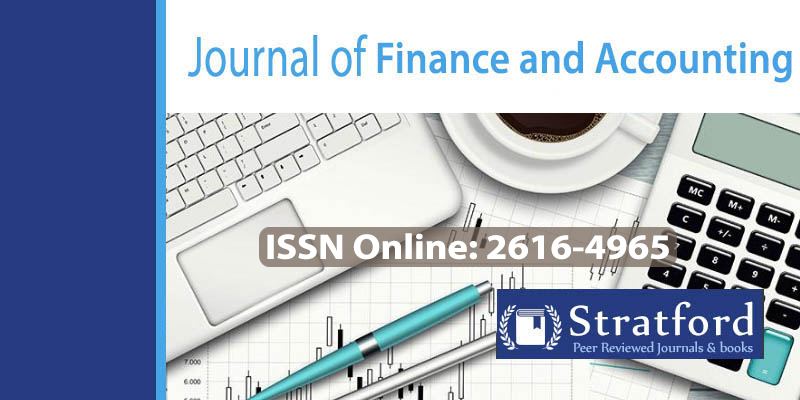Effect of Flexible Work Arrangements on Employee Turnover in Commercial Banks in Uasin Gishu County, Kenya
DOI:
https://doi.org/10.53819/81018102t3149Abstract
Employee retention in commercial banks in Kenya is a significant issue as annual turnover rates for employees range between 25-30 per cent and cost the banking sector KSh 3.2 billion on recruitment costs, training costs, and lost productivity annually. In the more rural counties like Uasin Gishu other hurdles for commercial banks are seasonal agricultural financing cycles, labour markets that are competitive for the banks, poor work-life balance mechanisms which affect stability and efficiency of the workforce. This paper investigated the impact of flexible work arrangement on employee turnover on commercial banks in Uasin Gishu County. The theory was based on spillover theory. The research was descriptive research using correlational research design derived from positivism research philosophy targeted 1200 employees of 18 licensed commercial banks operating in Uasin Gishu County. Stratified random sampling and Yamane's formula were adopted for selecting sample of 300 respondents. Structured pilot tested questionnaires with 5-point likert scales were used to gather primary data. Validity of results was assured using expert judgement and factor analysis and reliability was established using Cronbach's alpha (0.756). Descriptive and inferential statistics have been used (including correlation and regression analysis). Findings indicated that flexible work arrangements had a significant positive effect on employee retention (v = 0.450, t = 8.345, p < 0.000), with flexible work arrangements accounting for 20.2% variance of employee turnover. The research recommends development of structured flexible work policies, implementation of systematic schedule flexibility options, expansion of remote work facility, development of compressed workweek programs, and to provide reasonable work location autonomy based on operational requirements and organizational capacity.
Keywords: Flexible Work Arrangements, Employee Turnover, Commercial Banks, Work-Life Balance, Employee Retention
References
Abutabenjeh, S., & Jaradat, R. (2018). Clarification of research design, research methods, and research methodology: A guide for public administration researchers and practitioners. Teaching Public Administration, 36(3), 237-258. https://doi.org/10.1177/0144739418775787
Ali, N. A., Wekesa, S., & Namusonge, G. S. (2022). Flexible work practices and employee retention in state corporations in the coastal region of Kenya. International Journal of Current Aspects, 6(1), 1-18.
Allen, T. D., Johnson, R. C., Kiburz, K. M., & Shockley, K. M. (2013). Work-family conflict and flexible work arrangements: Deconstructing flexibility. Personnel Psychology, 66(2), 345-376. https://doi.org/10.1111/peps.12012
Babbie, E. (2004). The practice of social research (10th ed.). Wadsworth/Thomson Learning.
Byron, K. (2005). A meta-analytic review of work-family conflict and its antecedents. Journal of Vocational Behavior, 67(2), 169-198. https://doi.org/10.1016/j.jvb.2004.08.009
Central Bank of Kenya. (2024). Bank supervision annual report 2024. Nairobi: CBK.
Choi, S. (2019). Flexible work arrangements and employee retention: A longitudinal analysis of the federal workforces. Public Personnel Management, 49(3), 470-495. https://doi.org/10.1177/0091026019886340
Cooper, D. R., & Schindler, P. S. (2014). Business research methods (12th ed.). McGraw-Hill Education.
Creswell, J. W., & Creswell, J. D. (2017). Research design: Qualitative, quantitative, and mixed methods approaches (5th ed.). Sage Publications.
Edwards, J. R., & Rothbard, N. P. (2000). Mechanisms linking work and family: Clarifying the relationship between work and family constructs. Academy of Management Review, 25(1), 178-199. https://doi.org/10.2307/259269
Greenhaus, J. H., & Powell, G. N. (2006). When work and family are allies: A theory of work-family enrichment. Academy of Management Review, 31(1), 72-92. https://doi.org/10.5465/amr.2006.19379625
Haines, V. Y., III, Guerrero, S., & Marchand, A. (2024). Flexible work arrangements and employee turnover intentions: Contrasting pathways. The International Journal of Human Resource Management, 35(11), 1970-1995. https://doi.org/10.1080/09585192.2024.2323510
Hill, E. J., Grzywacz, J. G., Allen, S., Blanchard, V. L., Matz-Costa, C., Shulkin, S., & Pitt-Catsouphes, M. (2008). Defining and conceptualizing workplace flexibility. Community, Work & Family, 11(2), 149-163. https://doi.org/10.1080/13668800802024678
Kelly, E. L., Moen, P., & Tranby, E. (2011). Changing workplaces to reduce work-family conflict: Schedule control in a white-collar organization. American Sociological Review, 76(2), 265-290. https://doi.org/10.1177/0003122411400056
Kenya Bankers Association. (2024). Kenya banking sector report 2024. Nairobi: KBA.
Kothari, C. R. (2004). Research methodology: Methods and techniques (2nd ed.). New Age International.
Lambert, S. J. (1990). Processes linking work and family: A critical review and research agenda. Human Relations, 43(3), 239-257. https://doi.org/10.1177/001872679004300303
Mugenda, O. M., & Mugenda, A. G. (2013). Research methods: Quantitative and qualitative approaches. African Centre for Technology Studies.
Mutiso, J., & Kamau, A. (2023). Turnover patterns in Kenyan commercial banks: An industry analysis. Journal of African Business Studies, 8(3), 112-128.
Pepple, G. J., Iwuanyanwu, E. C., Temitayo, F. A., Jude, A. J., & Oben-Etchi, G. (2023). Flexible work arrangements and employee retention in Access Bank Nigeria PLC, Calabar. Multidisciplinary Journal of Management and Social Sciences, 2(2), 45-62.
Saunders, M., Lewis, P., & Thornhill, A. (2019). Research methods for business students (8th ed.). Pearson Education.
Staines, G. L. (1980). Spillover versus compensation: A review of the literature on the relationship between work and nonwork. Human Relations, 33(2), 111-129. https://doi.org/10.1177/001872678003300203
Yamane, T. (1967). Statistics: An introductory analysis (2nd ed.). Harper and Row.
Yang, T., Shen, Y. M., Zhu, M., Liu, Y., Deng, J., Chen, Q., & See, L. C. (2024). Effects of co-worker and supervisor support on job stress and presenteeism in an aging workforce: A structural equation modelling approach. International Journal of Environmental Research and Public Health, 21(6), 656.



